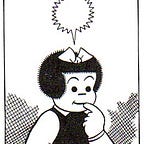Language
The Unlikely Success of “Sonder”
How did an “invented” word become a ubiquitous brand name?
Have you ever been at a loss for a word to describe a particular emotion or state of mind? John Koenig understands. A 40-year-old American who grew up in Switzerland, Koenig decided a dozen or so years ago to invent new English words for complicated feelings of loneliness, melancholy, and wonder. He turned his new lexicon into a book, The Dictionary of Obscure Sorrows, which became a best seller and which Koenig turned into a popular TED Talk.
Most of Koenig’s invented words have remained as obscure as the sorrows they define. (Here’s one: jalopia, “fatigue with the laborious maintenance of having a body, a piñata of meat that’s incompatible with the Legoland rationality of the modern world, which was built for beings whose indestructible parts lock onto the Earth with a satisfying ‘click,’ whose emotions are standardized, whose mistakes are best measured in parts per million.”)
But one word has had an unexpected afterlife, leaping off the page and into the imaginations of people around the world — in particular the people responsible for creating new brand names. That word is sonder, and it’s not exactly an “invented” word at all. In fact, it has a long, interesting, and even sorrowful history.
